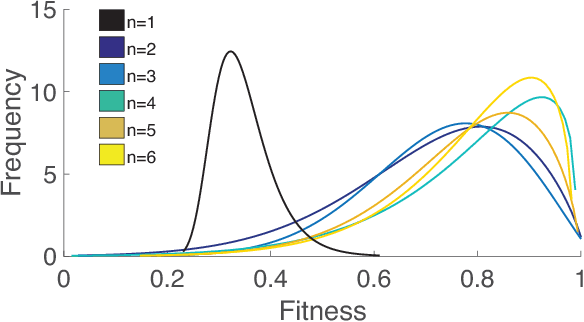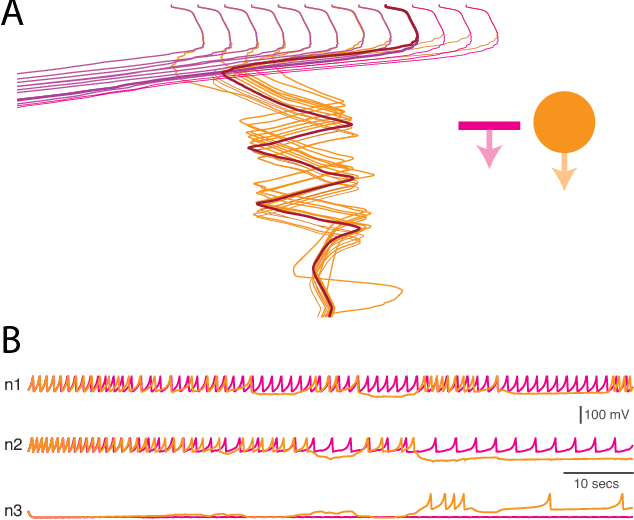Eduardo J. Izquierdo
Evolving Dyadic Strategies for a Cooperative Physical Task
Apr 22, 2020



Abstract:Many cooperative physical tasks require that individuals play specialized roles (e.g., leader-follower). Humans are adept cooperators, negotiating these roles and transitions between roles innately. Yet how roles are delegated and reassigned is not well understood. Using a genetic algorithm, we evolve simulated agents to explore a space of feasible role-switching policies. Applying these switching policies in a cooperative manual task, agents process visual and haptic cues to decide when to switch roles. We then analyze the evolved virtual population for attributes typically associated with cooperation: load sharing and temporal coordination. We find that the best performing dyads exhibit high temporal coordination (anti-synchrony). And in turn, anti-synchrony is correlated to symmetry between the parameters of the cooperative agents. These simulations furnish hypotheses as to how human cooperators might mediate roles in dyadic tasks.
Evolution and Analysis of Embodied Spiking Neural Networks Reveals Task-Specific Clusters of Effective Networks
Apr 19, 2017



Abstract:Elucidating principles that underlie computation in neural networks is currently a major research topic of interest in neuroscience. Transfer Entropy (TE) is increasingly used as a tool to bridge the gap between network structure, function, and behavior in fMRI studies. Computational models allow us to bridge the gap even further by directly associating individual neuron activity with behavior. However, most computational models that have analyzed embodied behaviors have employed non-spiking neurons. On the other hand, computational models that employ spiking neural networks tend to be restricted to disembodied tasks. We show for the first time the artificial evolution and TE-analysis of embodied spiking neural networks to perform a cognitively-interesting behavior. Specifically, we evolved an agent controlled by an Izhikevich neural network to perform a visual categorization task. The smallest networks capable of performing the task were found by repeating evolutionary runs with different network sizes. Informational analysis of the best solution revealed task-specific TE-network clusters, suggesting that within-task homogeneity and across-task heterogeneity were key to behavioral success. Moreover, analysis of the ensemble of solutions revealed that task-specificity of TE-network clusters correlated with fitness. This provides an empirically testable hypothesis that links network structure to behavior.
 Add to Chrome
Add to Chrome Add to Firefox
Add to Firefox Add to Edge
Add to Edge